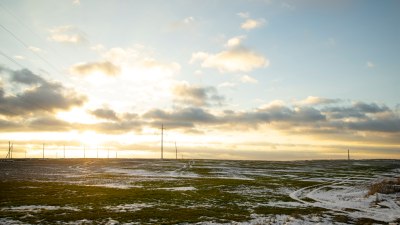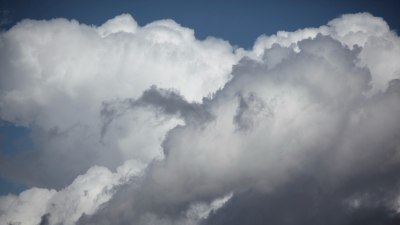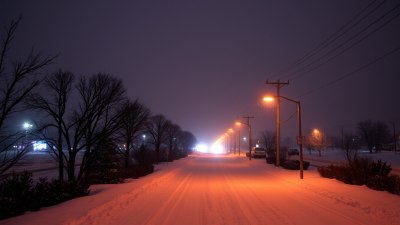The Science Behind Sudden Weather Changes
Explore the scientific factors and atmospheric processes that cause sudden weather changes affecting daily life.

Sudden weather changes can catch people off guard, impacting travel, agriculture, and daily routines. Understanding the science behind these rapid shifts helps forecasters predict weather more accurately and prepares individuals for unexpected conditions. This article delves into the atmospheric mechanisms driving abrupt changes in weather, from the roles of air masses and fronts to the influence of topography and human activities.
The Basics of Weather Systems
Weather is the state of the atmosphere at a particular place and time, including factors like temperature, humidity, wind, and precipitation. It is influenced by the complex interplay of forces within Earth’s atmosphere and its interaction with the planet’s surface. The atmosphere is composed of several layers, with the troposphere being the layer closest to Earth where most weather phenomena occur.
Weather systems are large-scale patterns shaped by the movement and interaction of air masses. Air masses are large volumes of air with similar temperature and moisture characteristics. When different air masses meet, their boundaries, known as fronts, become zones of dynamic weather change.
Air Masses and Weather Variability
Air masses originate over specific source regions—land or ocean areas with fairly uniform conditions. For example, a maritime tropical air mass develops over warm ocean waters and is warm and humid, while a continental polar air mass forms over cold land areas and is cold and dry. When these contrasting air masses move and collide, they create fronts that can instigate rapid weather changes.
The type of air masses involved determines the nature of sudden weather shifts. Warm fronts involve warm air advancing over cooler air, leading to gradual temperature rises and often prolonged drizzle or rain. Cold fronts push cold air under warm air, forcing it upward rapidly, which can cause thunderstorms, gusty winds, and sudden temperature drops.
Fronts and Their Impact on Weather
Fronts act as boundaries marking the transition zone where air masses with different characteristics meet. The interaction at these fronts destabilizes the atmosphere, promoting cloud formation and often precipitation. When a cold front advances, it can displace warm, moist air quickly, triggering powerful storms and abrupt changes in temperature and wind direction.
Occluded fronts occur when a cold front overtakes a warm front, potentially causing complex weather patterns including heavy rain and strong winds. Stationary fronts, where two air masses remain almost stationary, can cause prolonged periods of cloudiness and precipitation, sometimes leading to flooding.
Role of Atmospheric Pressure
Atmospheric pressure, the force exerted by the weight of air, is a fundamental driver of weather changes. Low-pressure systems are generally associated with rising air, cloud formation, and precipitation. In contrast, high-pressure systems promote descending air, often leading to clear skies and stable conditions.
The movement and interaction of high and low-pressure systems can cause rapid weather transitions. For instance, the approach of a low-pressure system can bring sudden storms, strong winds, and drops in temperature. The shifting pressure gradient between these systems influences wind speed and direction, contributing further to sudden weather changes.
Jet Streams and Rapid Weather Shifts
Jet streams are fast-flowing, narrow air currents in the upper atmosphere that significantly influence surface weather. These streams of air travel at speeds up to 250 mph and separate cold polar air masses from warmer tropical air masses. Their position and strength can change quickly, steering weather systems and intensifying fronts.
A strong jet stream can enhance the development of storms and create sharp temperature contrasts across short distances. When the jet stream dips or meanders, it can drag cold air southwards or warm air northwards, leading to sudden shifts in local weather conditions.
Topography and Local Weather Variations
Geographical features such as mountains, valleys, and large bodies of water influence local weather patterns and contribute to sudden weather changes. Mountains can act as barriers that force air masses upward, cooling them and causing precipitation on windward slopes with dry conditions on the leeward side, a phenomenon known as the rain shadow effect.
Valleys can funnel winds and intensify them, leading to gusty conditions that arrive suddenly. Proximity to oceans or large lakes can moderate temperatures but also provide moisture that, when combined with unstable atmospheric conditions, can promote rapid cloud development and thunderstorms.
Convective Processes and Sudden Storms
Convection occurs when warm air near the surface rises due to being less dense than the cooler air above. This rising air cools and condenses, forming clouds and potentially thunderstorms. On hot days, localized heating can cause intense convection, leading to sudden storms characterized by heavy rain, lightning, and strong winds.
The development of cumulonimbus clouds is a hallmark of convective thunderstorms. These clouds can grow rapidly, reaching heights of 12 kilometers or more within minutes. This rapid vertical growth is often responsible for quick weather changes such as sudden gust fronts or hail.
Influence of Human Activities on Sudden Weather
Human activities, especially urbanization and pollution, can influence local weather and increase the likelihood of sudden weather changes. Urban areas have altered surface properties, such as reduced vegetation and increased heat absorption by buildings and pavement, leading to urban heat islands.
This warming can intensify convection, generating localized thunderstorms that arrive unexpectedly. Additionally, pollutants can act as cloud condensation nuclei, altering cloud formation processes and precipitation patterns. Anthropogenic emissions change atmospheric composition and can indirectly affect weather variability.
Predicting Sudden Weather Changes
Accurate forecasting of sudden weather changes relies on advanced observation networks and computational models. Weather satellites, Doppler radar, weather balloons, and ground stations provide critical data on atmospheric conditions. Combining these data with numerical weather prediction models enables meteorologists to identify developing fronts, unstable air masses, and jet stream shifts.
Advances in high-resolution modeling allow forecasts of convective storms and rapid shifts with greater lead time. However, the chaotic nature of the atmosphere limits predictability, especially for highly localized or short-duration events. Ongoing research seeks to improve understanding of rapid weather processes and enhance forecast reliability.
Case Studies of Sudden Weather Events
Historical weather events illustrate the impact of sudden weather changes. For example, the sudden cold front during the May 2021 Texas winter storm rapidly brought freezing temperatures, ice, and snow, disrupting energy systems. In tropical regions, squall lines can form abruptly, causing severe thunderstorms that damage infrastructure and endanger lives.
Mountainous regions often experience rapid weather changes due to topographic lifting and orographic effects. For instance, the Rocky Mountains see sudden storms develop quickly in the afternoon, transforming pleasant conditions into severe weather within hours.
Mitigation and Public Awareness
Understanding the science behind sudden weather changes is critical for public safety and planning. Early warning systems, emergency protocols, and public education campaigns help reduce risks associated with abrupt weather. Communities in vulnerable areas benefit from improved infrastructure and preparedness tailored to their specific weather challenges.
Mobile technology and social media now enable real-time dissemination of weather alerts, helping individuals respond promptly to sudden changes. Encouraging awareness about the signs of changing weather and promoting preparedness can minimize disruptions and hazards.
In summary, sudden weather changes result from complex atmospheric interactions involving air masses, fronts, pressure systems, jet streams, and local geography. Ongoing advances in meteorology continue to improve understanding and prediction, allowing society to adapt and mitigate the impacts of these rapid shifts.











